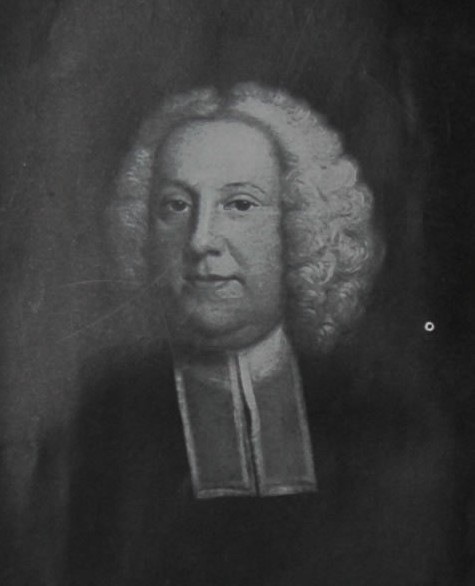<Back to Index>
- Mathematician John Pell, 1611
- Painter Francesco Ubertini, il Bacchiacca, 1494
- Bulgarian Dissident Writer Georgi Ivanov Markov, 1929
PAGE SPONSOR

John Pell (1 March 1611 – 12 December 1685) was an English mathematician.
He was born at Southwick in Sussex. He was educated at Steyning Grammar School, and entered Trinity College, Cambridge, at the age of thirteen. During his university career he became an accomplished linguist, and even before he took his B.A. degree (in 1629) corresponded with Henry Briggs and other mathematicians. In 1630 he was teaching in the short-lived Chichester Academy, set up by Samuel Hartlib. Shortly afterwards he married Ithamara Reginald, sister of Bathsua Makin.
Pell
spent much of the 1630s working under Hartlib's influence, on a variety
of topics in the area of pedagogy, encyclopedism and pansophy, combinatorics and the legacy of Trithemius. By 1638 he had formulated a proposal for a universal language. In mathematics, he concentrated on expanding the scope of algebra in the theory of equations, and on mathematical tables. As part of a joint lobbying effort with Hartlib to find himself support to continue as a researcher, he had his short Idea of Mathematics printed in October 1638. The campaign brought interested responses from Johann Moriaen and Marin Mersenne. His reputation and the influence of Sir William Boswell, the English resident, with the States-General procured his election in 1644 to the chair of mathematics in Amsterdam, after an earlier attempt immediately after Martin van den Hove left for Leiden had failed. From 1644 he worked on a polemical work, against Longomontanus. For this he put in a large effort soliciting help and testimonials: from Bonaventura Cavalieri, his patron Sir Charles Cavendish, René Descartes, Thomas Hobbes, Mersenne, Claude Mydorge, and Gilles de Roberval. It finally appeared as Controversy with Longomontanus concerning the Quadrature of the Circle (1647). Pell moved in 1646, on the invitation of Frederick Henry, Prince of Orange, to Breda, and remained there until 1652. From 1654 to 1658 Pell acted as Oliver Cromwell's political agent to the Protestant cantons of Switzerland; he co-operated with Samuel Morland at Geneva. A mathematical pupil and disciple there, from 1657, was Johann Heinrich Rahn, known as Rhonius. Rahn is credited with the invention of the division sign ÷ (obelus);
it has also been attributed to Pell, who taught Rahn a three column
spreadsheet style technique of tabulation of calculations, and acted as
editor for Rahn's 1659 book Teutsche Algebra in which it appeared. This book by Rahn also contained what would become known as the "Pell equation". Diophantine equations was a favorite subject with Pell; he lectured on them at Amsterdam. He is
now best remembered, if perhaps erroneously, for the indeterminate
equation which is known as Pell's equation. This problem was in fact proposed by Pierre de Fermat first to Bernard Frénicle de Bessy,
and in 1657 to all mathematicians. Pell's connection with the problem
is through Rahn. It consisted of the publication of the solutions of John Wallis and Lord Brouncker, in his edition of Thomas Branker's Translation of Rhonius's Algebra (1668);
added to his earlier editorial contributions, whatever they were, to
the 1659 algebra book written by Rahn (i.e. Rhonius). This new edition of what was essentially Rahn's work, by Pell, included a great deal of additional material on number theory, amounting to a reply to the 1657 book Exercitationes mathematicae by Frans van Schooten. It is also notable for its inclusion of a Table of Incomposits, an early large factor table. After his return to England he took orders, in 1661, when he became rector of Fobbing in Essex. In 1663 he was given an honorary D.D. (Lambeth degree), and was also elected a Fellow of the Royal Society. At the same time he was presented by Bishop Gilbert Sheldon to the rectory of Laindon, Essex; Sheldon expected him to treat the positions as sinecures. He spent time as mathematics teacher to William Brereton, 3rd Baron Brereton, at Brereton Hall. In 1673 he met Leibniz in London, and was able to inform him that some of his mathematical work had been anticipated by François Regnaud and Gabriel Mouton. His
devotion to mathematics seems to have interfered with his advancement
in the Church and with his private life. For a time he was confined as a debtor in the King's Bench Prison. He lived, on the invitation of Dr Daniel Whistler, for a short time in 1682 at the College of Physicians, but died at the house of Mr Cothorne, reader of the church of St Giles-in-the Fields. Many of Pell's manuscripts fell into the hands of Richard Busby, master of Westminster School, and afterwards came into the possession of the Royal Society; they are still preserved in nearly forty folio volumes in the British Library,
which contain, not only Pell's own memoirs, but much of his
correspondence with the mathematicians of his time. His chief works are: Astronomical History of Observations of Heavenly Motions and Appearances (1634); Ecliptica prognostica (1634); An Idea of Mathematicks (1638); Controversy with Longomontanus concerning the Quadrature of the Circle (1646?); A Table of Ten Thousand Square Numbers (fol.; 1672). The Idea was
a short manifesto. It made three suggestions: a mathematical
encyclopedia and bibliography; a complete mathematics research library
and collection of instruments, with state sponsorship; and a
three-volume comprehensive set of mathematical textbooks, able to
convey the state of the art to any scholar.
Upon the death of John Pell's brother, Thomas Pell, in 1670, the mathematician's son, Sir John Pell inherited lands in New York, where he lived as the first Lord of the Manor of Pelham. His descendants have continued to be prominent in the American polity, including Ambassador and U.S. Representative Herbert Pell and U.S. Senator Claiborne Pell.